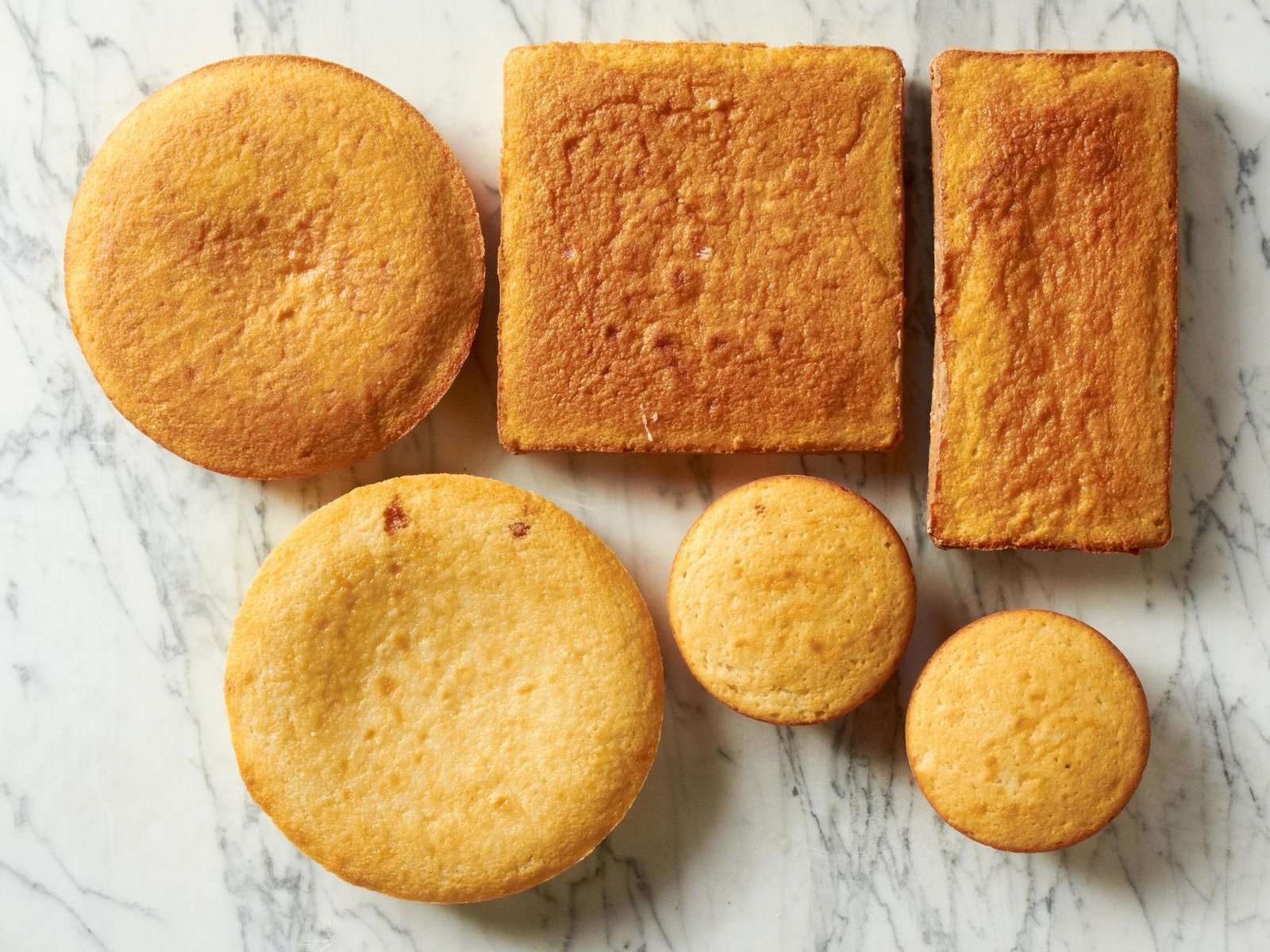You prepare some spectacular biscuits but they never grow enough and you are always left with the question: “why is that?” Clear up this culinary enigma and discover all the tricks to make the cake raise a lot. Knowing them, you will probably also detect your possible mistakes.
In addition, these instructions will also serve you for gluten-free biscuits, providing you with a very fluffy and high final product. What are you waiting for? Run to the kitchen to put each of these tricks to the test and surprise your guests with a spectacular dessert. Oh, and don’t forget to share this information so that everyone knows these simple tricks to make the cake rise a lot.
Use ingredients at room temperature
If the recipe does not tell you otherwise, practice this advice, as this will prevent the dough from cutting during some time of its preparation. Therefore, before you start preparing your cake, keep in mind that you should always take the ingredients out of the fridge well in advance. Practice this, especially with eggs, by leaving them at room temperature for 30 minutes.
Don’t miss our article on “Why the cake won’t rise “to learn about the most common mistakes, since by knowing them and putting into practice the tricks that we share now, you will get incredible cakes!
Weigh or measure ingredients accurately
Although creativity is very valuable in professional confectionery, precision is also very important; both in the procedure itself and in the quantity of each ingredient, since any excess or omission can change the final result of a recipe. For this reason, among our tricks to get a tall and fluffy cake, we highlight the fact of acquiring a scale or measuring utensils (cup and spoons), as they are more reliable compared to conventional utensils.
Don’t know which one to choose? If you weigh the food you will have much more exact amounts. On the other hand, if you prefer to measure them, you need additional guidance from comparative tables, since each one occupies a different volume than another. That is, 1 cup of wheat flour does not weigh the same as 1 cup of whole meal flour, nor do they both weigh the same as 1 cup of rice.
Use the correct flour
The flour indicated to prepare a cake that rises a lot is all-purpose flour, also known as 0000 flour, loose flour or weak flour. Why? This type of flour contains less than 8% gluten, so the dough is lighter. That is, most cakes rise and fluff more if they contain less gluten, with the exception of austere or castellan cake , which uses 000 flour (bread flour).
A very interesting extra fact is that gluten-free biscuits can be identical to a conventional one by replacing the flour and, sometimes, also varying the amounts of it a little. Since they do not contain gluten, you get a tall and fluffy cake.
Buy quality ingredients
In any recipe it is essential to use optimal products: well harvested, processed or handled, packed, and stored. Foods that retain all their essential characteristics and thus denote their freshness are another of the tricks that we must take into account. Eggs in poor condition, expired flour or traces of mold due to poor storage will slow down the growth of any cake and can also ruin it completely.
Use baking powder properly
Baking powder or chemical leavening is directly related to the volume of most cakes, so it is vital to know it well. So, keep in mind the following tricks so that the cake raises a lot:
- Check the expiration of the yeast. If its time of use has passed, it will not work or at least its effect will be less. In both cases, it will affect the height and texture of the cake.
- Don’t confuse baking powder with baker’s yeast. Although both fulfill the same function (incorporating air into preparations), they have different compositions, carry out the process in different ways and each one is used for specific preparations. For example, yeast contains microorganisms, adds air through alcoholic fermentation, and is used for bakery products: bread and pastries. On the other hand, baking powder is a chemical product, it adds air by activating mainly with heat and it is used exclusively for biscuits, cupcakes, pancakes, etc. In many countries this product is known as chemical yeast, but in any case it should not be confused with fresh or dry yeast. Discover the types of yeast in this other article.
- Learn how chemical drivers work. Some are activated with heat (oven) and others with acid ingredients (lemon, vinegar, eggs). Use this reference so as not to interrupt the impeller process and, consequently, the growth of the cake. For example, if you use an impeller that is activated by an acidic ingredient, such as baking soda, don’t wait too long to bake it, as it will lose strength and height.
- Use the precise amount of chemical yeast. Excess yeast can cause the cake to rise in the oven and sink on the way out. In the same way, too little yeast will prevent the cake from rising.
If you don’t have yeast right now but still wants to make a cake that raises a lot,
Add air to the mix
For many confectionery products, the incorporation of air in the mixture determines its height, volume and fluffiness. For that reason, when it comes to tricks to make the cake rise a lot, this one can be considered number one. This trick is achieved through several techniques: creaming the butter, beating the egg yolks, whipping the whites to stiff peaks, sifting the dry ingredients and using baking powder.
Generally, the aeration of the eggs or creaming of the butter is combined with the sifting of the dry ingredients and the baking powder, although in Asian pastry, in some recipes, extra fluffy and tall biscuits are obtained using only the beating of the eggs and sifted, thus dispensing with yeast. On the other hand, if it is about express biscuits beaten in a blender or with rods, but without much care, yeast is essential to achieve a good result.
Beat the mixture correctly
Some people think that incorporating air into the preparation means beating too much, and it really means beating just right. Reducing or exceeding this procedure can cause the growth of our dessert to stop or, worse still, it can cause it to sink. Thinking about all this, here are the main tricks so that the cake raises a lot during the shake:
Aerated mixes
- Use the right utensils. He prefers a balloon rod and a very deep bowl, as they will favor the incorporation of air. Also, use impeccable and dry utensils (no traces of grease or liquids).
- Start at low or medium-low speed. This technique allows the formation of small air bubbles, which, due to their size, provide stability. When the preparation reaches more volume, change the speed to high.
- Beat plain butter or plain eggs first before adding sugar. For airy mixes, this will give them body and a stable base to grow on.
- Add the sugar little by little and dissolve it completely. Thus, you prevent the preparation from sinking or losing air.
- Check if the preparation is at its point. Aerated mixes are ready when they double or triple in size, lighten in color, take on some shine, and the sugar is completely dissolved. Additionally, each one has some of its own characteristics that denote it: the point of snow firm peaks, the creaming of butter creamy and light texture, and the milkshake of eggs creamier texture.
- Once the cremation is ready, add the eggs one by one. In this type of mixture you must add the eggs like this; otherwise you will lose acquired air.
Incorporation of wheat flour
As soon as you add this ingredient, beat just until it is integrated into the preparation, since the gluten should not develop, but neither should there be any lumps. Add the flour in three batches, preferably sifting it again in each batch. If you use a mixer, apply low speed. All this ensures that the air cells created are not destroyed and, consequently, the cake is caked and does not grow.
Incorporation of the egg whites
If you have a preparation with egg whites on the verge of snow and you must add them to the mixture that contains the flour, do it in 3-4 batches and slowly. On each occasion, make enveloping and careful movements, in this way you will not lose the air achieved. Of course, everything must be very well integrated.
Choose a mold of the right size
If you use a very large one, the dough will spread out too much and won’t rise. On the other hand, if you select a very small mold and fill it to the brim, during cooking it will rise and spill, thus wasting part of the mixture and, therefore, the cake will lose height or sink in the center. For these reasons, calculate very well the mass you have before choosing the mold through a conversion or using a table of molds according to the approximate weight of a cake. Likewise, you can always ask the author of the recipe what mold they have used if they do not indicate it.
Pre-heat the oven
Keeping the temperature constant during baking can be considered one of the most important tricks for the cake to raise a lot. In this sense, preheating the oven is the beginning of the cooking stage, because if you introduce the mixture cold, not only will the cake take much longer to cook, but it can also affect the activation of the yeast and the cake may not grow. Up enough. For this reason, preheat the oven 10 minutes before baking.
Use the right temperature during baking
Sometimes a recipe tells us a cooking time that fails and not because it is wrong, but because each oven has a different heat intensity. For this there are two solutions: buy an oven thermometer or try many times with your oven until you know it completely.
For all the above, if the cake sinks when you take it out of the oven, the temperature was probably too high, so it browned on the outside and did not cook on the inside. On the other hand, if it sinks while you bake it, the temperature was too low.
At this point, we can ask ourselves if for sponge cake, oven with air or not? The air allows the oven’s heat to be distributed evenly, so if our oven is not capable of heating evenly; it can be a good solution.
Never open the oven ahead of time
If you are impatient and open the oven before 2/3 of the time is up, apart from the fact that you will not get a tall cake, it will surely sink. Why does this happen? Because you interrupt the action of the chemical yeast due to a variation in temperature. In addition, you also slow down the coagulation process of the egg proteins (mainly responsible for the structure of the cake), which occurs during the first 30 minutes of cooking.
Never let the cake cool in the pan for more than 10 minutes.
Among our tricks to make the cake raise a lot, this may seem minor, but it visibly affects the appearance of our cake. Why? If you leave it to cool inside the mold, humidity will be produced by the temperature contrast, the crumb will get wet and, consequently, the cake may shrink a little and flake.



